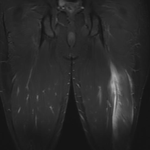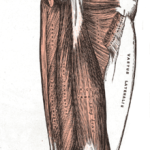Introduction
Hamstring strains are commonly assessed and treated in the world of sports physiotherapy. They represent the most common injury in a number of sports, including AFL and soccer, accounting for up to 12-16% of injuries (Hawkins et al., 2001; Warren et al., 2010). Dvorak and Astrid (2000) suggested that hamstring injuries occur at an incidence of 10-35 injuries per 1000 playing hours. Given the huge incidence and the fact that many of the injuries are recurrences of previous strains (Woods et al., 2004), many sporting teams invest time and money in attempting to prevent hamstring strains. This article will discuss new research into the nordic hamstring exercise and its potential use in the prevention and rehabilitation of hamstring strains.
What Are Nordic Hamstring Exercises?
A video example of how to perform a nordic hamstring exercise:
Why Nordic Hamstring Exercises?
Good question. Much research has been done on the prevention of hamstring strains. In fact, evidence based interventions to prevent hamstring strains have been previously discussed here on this site. As discussed in that article, there has been conflicting evidence regarding the efficacy of eccentric strength training to prevent hamstring injury. It is reasonable to expect that improving eccentric function of the hamstring may reduced hamstring injury risk, as eccentric actions have been implicated in the causation of hamstrings injuries (Proske & Morgan, 2001). This is following evidence that suggests that injury occurs during sprinting and stretching actions, that is combined hip flexion and knee extension (Woods et al., 2004).
Interestingly, Arnason et al (2008) showed that eccentric strength training with Nordic hamstring exercises (combined with a warm-up stretching) reduced hamstring strain risk, whereas a flexibility training program was ineffective. This is likely due to the inability of the “Flexibility Program” to positively influence the length-tension relationship of the hamstring in the same way as the eccentric strength training. The clinical utility of eccentric training for flexibility and its role in sarcomerogenesis and changing the length-tension curve of a muscle has been previously discussed on this site and suggests how improving a muscle’s working range can prevent fibres from reaching an injurious position.
So, why the Nordic hamstring exercise? Well, for starters as previously stated Arnason et al (2008) have shown some initial promising results. Furthermore, Ebben et al. (2006) have suggested that Nordic hamstrings exercises elicit greater activation of the hamstrings compared to many other commonly utilised hamstring exercises. Now we’re talking! Unfortunately, there remains a few unanswered clinical questions about the use of nordic hamstring exercises. These are:
- Can the nordic hamstring exercise engage the hamstring at extended knee angles i.e. those where injury is likely to occur (Brughelli & Cronin, 2007)?
- Does this exercise engage both limbs equally, or will the dominant limb be subjected to greater strain and thus greater adaptation (Clark et al., 2005)?
Hmmm, very interesting. Fortunately, new research is giving us a greater understanding of the characteristics of the Nordic hamstring exercise (Iga et al., 2012).
New Research on Nordic Hamstring Exercises
Iga et al. (2012) randomised 18 professional soccer players into 2 groups to compare the training responses of a 4 week period of eccentric training using Nordic hamstring exercises (n=10) to a no-intervention control (n=8). They assessed:
- EMG Activity via SEMG: They assessed both the lateral and medial hamstrings in both the dominant and non-dominant legs.
- Isokinetic Strength: measured from 90 – 10 degrees at 3 speeds (60, 120 and 240 degrees/second)
Results of This Research
The authors found some interesting results. In terms of characteristics of the Nordic hamstring exercises they found that:
- There was no significant difference between limbs for EMG amplitude i.e. both limbs are engaged to a similar extent, regardless of dominance
- Muscle activity was highest during the middle phase of the exercise (that is 60-31º), and remains significantly elevated even at more extended joint positions (30-0º)
This answers some previous questions regarding the EMG characteristics of the Nordic hamstring exercises, however, we are also interested in the effect of this training over time. The authors found that after 4 weeks of training:
- Eccentric peak torque of the hamstrings increased by up to 21 % in the training group (with no change in the control group)
- Improvements in eccentric peak torque of the hamstrings of both limbs were independent of assessments velocity i.e. they were stronger fast and slow
- There was no significant change in the angle of peak torque
These are interesting results. Consistent with previous research, the slow velocity of this exercise resulted in adaptations transferable to higher velocity movements (Duncan et al., 1989). This has clear implications for hamstring strain prevention and rehabilitation which are often high velocity injuries. However, what was inconsistent with previous research was the lack of significant change in the angle of peak torque (Brocket et al., 2001). It is possible that the intervention and follow-up time (4 weeks) was too short to allow for meaningful improvements (O’Sullivan et al., 2012).
Limitations of This Research
There are a few limitations to this study, which include:
- Small sample size: which will reduce the power of the results
- Short intervention period and follow-up (4 weeks): may not allow for some adaptations to take place
- Trained athletes: the study used professional level athletes. It is possible that “untrained subjects” may show a different profile of action and response to training
- Uninjured athletes: the study used uninjured participants, and it is not known how someone with an injury will perform a Nordic hamstring exercise or what training effect it will have
What Are Your Thoughts?
What are your thoughts on this research and the use of the Nordic hamstring exercises in your practice? Love it, hate it? Do you use them in your clinical practice? Be sure to let me know in the comments or you could:
Promote Your Clinic: Are you a physiotherapist or physical therapist looking to promote your own clinic? Check this out.
References
Arnason A, Andersen TE, Holme I, Engebretsen L, Bahr R. Prevention of hamstring strains in elite soccer: an intervention study. Scandinavian Journal of Medicine & Science in Sports 2008;18:40–48
Brockett CL , Morgan LM , Proske U . Human hamstring muscles adapt to eccentric exercise by changing optimum length . Med Sci Sports Exerc 2001;33: 783 – 790
Brughelli M, Cronin J. Altering the length-tension relationship with eccentric exercise: Implications for performance injury. Sports Med 2007;37:807–826
Clark R, Bryant A, Culgan J, Hartley B. The effects of eccentric hamstring strength training on dynamic jumping performance and isokinetic strength parameters: a pilot study on the implications for the prevention of hamstring injuries . Phys Ther Sport 2005;6:67 – 73
Duncan PW, Chandler JM, Cavanaugh DK, Johnson KR, Buehler AG. Mode and speed specifi city of eccentric and concentric exercise training . J Orthop Sports Phys Ther 1989;11: 70–75
Dvorak J, Astrid J. Football injuries and physical symptoms: A review of the literature. Am J Sports Med 2000;28:3–9
Ebben WP, Leigh DH, Long N, Clewien R, Davies JA. Electromyographical analysis of hamstring resistance training exercises. In: Proceeding of the XXIV International Symposium of the Society of Biomechanics in Sports. 2006 Jul 15 Salzburg (Austria): University of Salzburg, 2006; 236–239
Hawkins RD , Hulse MA , Wilkinson C , Hodson A , Gibson M . The association of football medical research programme: an audit of injuries in
professional football . Br J Sports Med 2001 ; 35 : 43 – 47
Iga J, Fruer CS, Deighan M, Croix MDS, James DVB. ‘Nordic’ hamstrings exercises – engagement characteristics and training responses. Int J Sports Med 2012; 33: 1000–1004
O’Sullivan K, McAulifee S, DeBurca N. The effects of eccentric training on lower limb flexibility: a systematic review. Br J Sports Med 2012;46:838–845
Proske U, Morgan DL. Muscle damage from eccentric exercise: mechanism, mechanical signs, adaptation and clinical applications . J Physiol 2001;537:333–345
Warren P, Gabbe BJ, Schneider-Kolsky M et al. Clinical predictors of time to return to competition and of recurrence following hamstring strain in elite Australian footballers. Br J Sports Med 2010 44: 415-419
Woods C , Hawkins RD , Maltby S , Hulse M , Thomas A , Hodson A . The football association medical research programme: an audit of injuries in professional football: Analysis of hamstring injuries . Br J Sports Med 2004;38:36–41
Photo Credit: wonker
Related Posts
Comments










Thanks for the overview of the most current research on the nordic protocol!